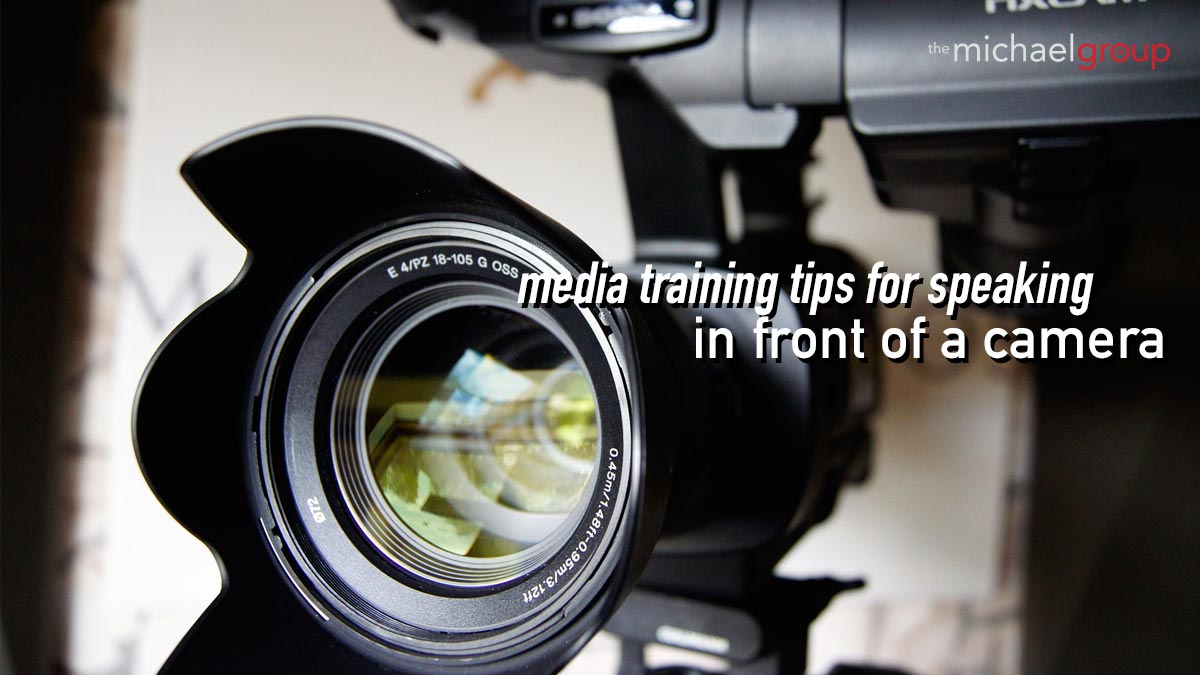
Speaking in front of a camera can be a daunting task for anyone and even if you aren’t a natural in front of the camera, media training can help you overcome any shortfalls you may have. If you struggle in front of the camera, here are some media training tips to help you really get your message across to your audience.
How you look is the first thing anybody watching your video will notice. Your appearance should be welcoming and nonthreatening, while still being appropriate for your content and your audience.
When you’re in front of the camera every single action seems to be concentrated, due to the fact that the audience’s attention is on you, with very little else to distract them. Before you start recording take a moment to get comfortable in your seat or if you’re standing, take a moment to ensure you’re standing up straight. Slouching is often detrimental in two ways. Firstly, it closes you off to your audience and overrides any confidence you may have. Remember to keep your shoulders back, and refrain from having your arms across your chest. Secondly, it portrays you in a way that makes you seem as if you’re uninterested in the topic and are simply presenting because you have to. Your goal is to try convey your message with enthusiasm and with as much honesty as possible.
The best way to look confident on camera, is to be confident. Nervous ticks such as a jumping leg or constantly fidgeting with your hands will be picked up by your viewers and distract them from what you’re saying. The easiest way to counter this is to breathe and find a comfortable place for your hands or feel free to use them to help you express yourself, without overdoing it and having your hands become a further distraction. Many people find that doing a mock recording without the cameras running helps calm their nerves, making the final recording much more comfortable. Find your own space to settle your nerves before recording, and if you stumble during the recording, try your best to continue on.
There are two important aspects of your wardrobe that you need to consider. The first is to make sure that the outfit you have chosen is appropriate for your video. A pair of boardshorts and a company T-shirt may work for a video to inform beach goers on safety but will not work if you are pitching to investors. The second aspect is to not betray your own personality. For example, choosing a waistcoat without a jacket over a sports coat and tie for a formal video, allows you to carry your own personality, and will help you feel comfortable. Be careful of jewelry, as it can distract viewers, or in some cases create a lot more noise than intended.
While videos focus on visuals, audio is just as important and your voice will be the most important piece of video. The combination and integration of both audio and visuals is what really works to capture your audience’s attention.
Tone is everything and will vary depending on the topic of your video. Don’t try to put on a voice as it can often come across as annoying or insincere. Use your natural speaking voice and talk to the camera as if it were your friend. This will capture the audience’s attention by giving them the sound they would have expected.
Your tone is part of your delivery, but so is your pacing, use of pauses, and body language. When you are talking you can use your body as a prop. Don’t shy away from walking across the screen to indicate the topic is moving on or to better position yourself to deliver the information. If your video is fun and friendly, drop in the occasional joke and smile. If you are moving your topic from something cheerful to something serious, let your voice reflect that change. Your voice is a powerful tool, so use it to its full capabilities.
For any of your video production needs and questions, please contact us at The Michael Group, and one of our highly trained team members will be more than happy to help you.